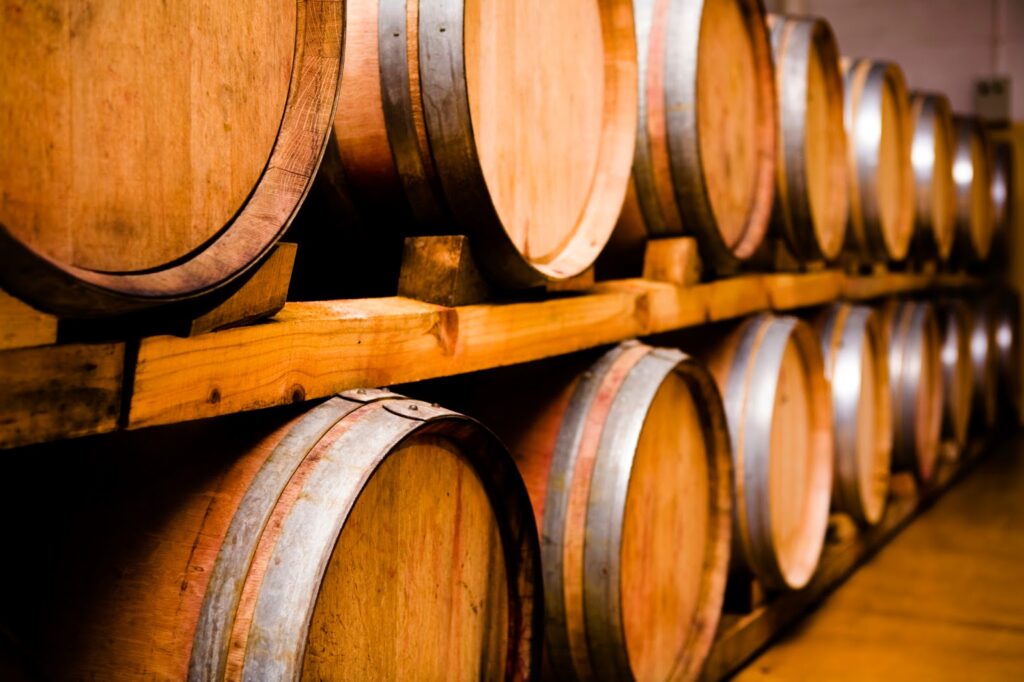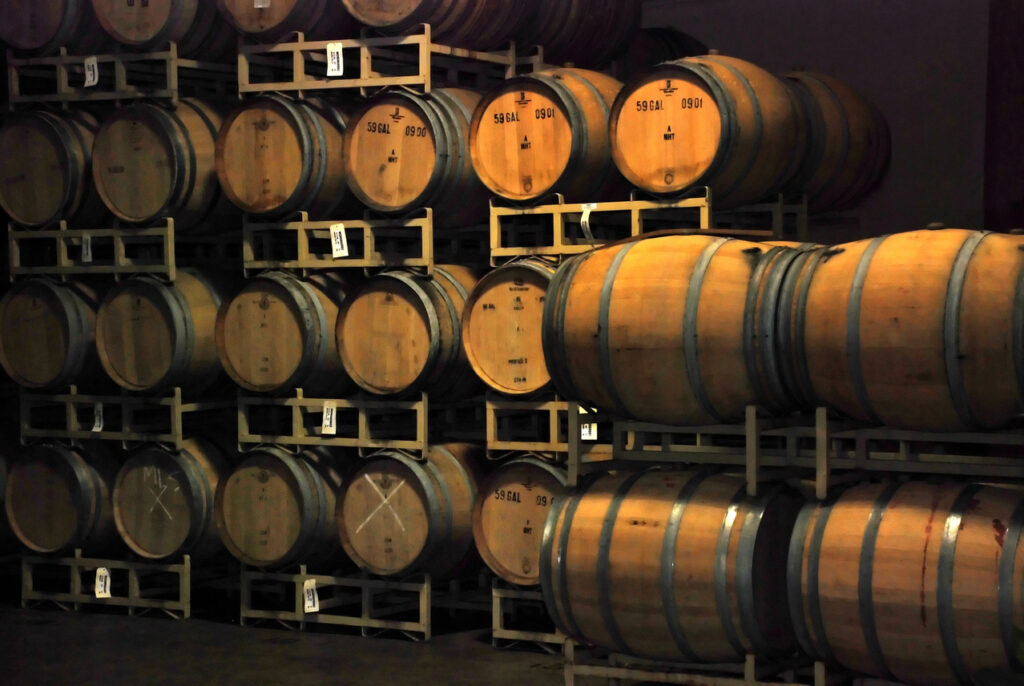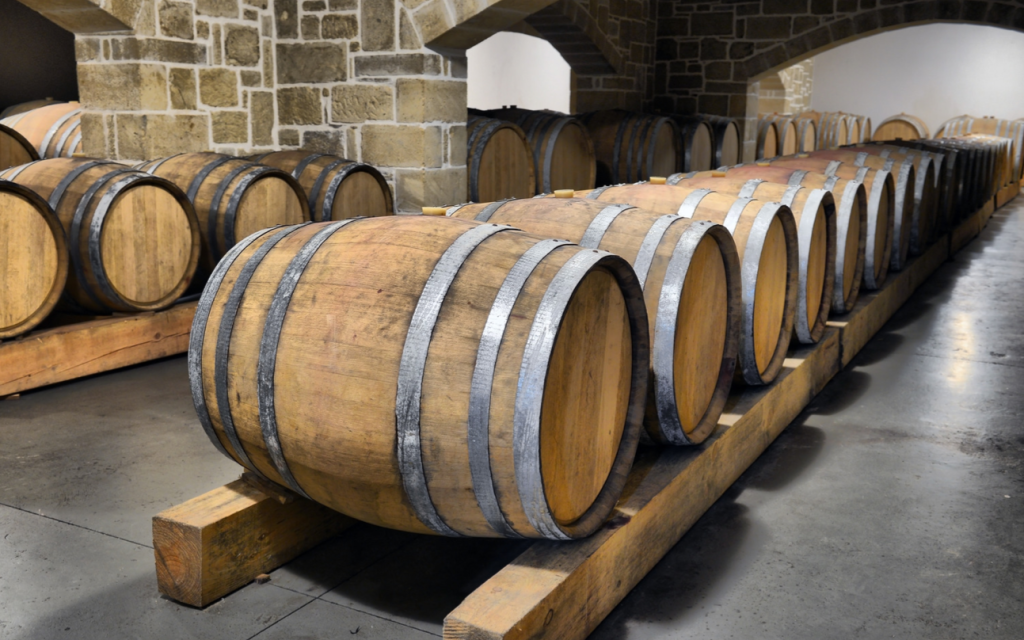BARRELS

HISTORIA
Barrels were used in the past to preserve and transport a wide variety of products because, due to their shape, they could be rolled. Nowadays, the use of barrels has been relegated to the aging of wines and some spirits.
Let’s start by talking about the raw material: oak. Why oak?
- Due to its flexibility, which facilitates the assembly and ‘taming’ of the staves in the formation of the barrel.
- Because of its grain, which imparts tightness to the barrel, yet allows the passage of oxygen particles. These oxygen particles are what make the wine evolve inside the barrel.
- Because it does not impart undesirable flavors and aromas to the wine, as well as the release of preservative substances, such as tannins.
Although there are many oak species in the world, the ones predominantly used for barrel making are French oak (Quercus petrea) and American oak (Quercus alba).
French oak is predominantly sourced from its forests, although it can also be found in other European locations such as Ireland, Portugal, or Sicily. The most important French forests include Alliers, Limousin, Nevers, Vosges, and Tronçais. Its origin dates back to the 17th century when the need to supply the French navy with raw materials promoted the exploitation and preservation of these forests. Today, virtually all of this wood is dedicated to the production of barrels.
On the other hand, American oak is primarily harvested from the vast oak expanses in the states of Minnesota, Missouri, Arkansas, Kentucky, Oregon, and Ohio. Unlike French oak, the amount of wood allocated for barrel production is a minority in the case of American oak.
One of the main differences between French oak and American oak is the price, with the cost of French oak barrels being approximately twice that of American oak barrels. This, among other reasons, is due to the method of extracting wood from oak logs. In the case of French oak, due to having a hollow pore, it has to be split parallel to the medullary rays of the tree, resulting in a higher wastage of wood. However, American oak can be conventionally sawn, allowing for a greater utilization of the wood.


Another major difference is how both oaks modify the organoleptic qualities of wines. The oxygenation rate of American oak is higher, resulting in wines evolving more rapidly. In other words, wines require less time to acquire the desired qualities. American oak imparts sweet and tropical aromas to the wine, such as vanilla, coconut, coffee, caramel, or cocoa.
However, French oak is quite the opposite. Micro-oxygenation occurs more slowly, requiring more time for aging, but in turn, it is carried out in a more balanced manner. It imparts the wine with a range of spicy and balsamic aromas, as well as notes of honey and nuts, among others. Some describe aging in French oak as a more refined process.
In conclusion, we cannot say that French oak is better than American oak. In fact, many wines are aged in both types of barrels, and the final product is a combination of both. Furthermore, each type of wine requires a different type of oak, and it is the winemaker’s task to determine which type of oak or combination of barrels is ideal to achieve the ultimate goal: crafting a wine to be enjoyed in the company of our loved ones.
